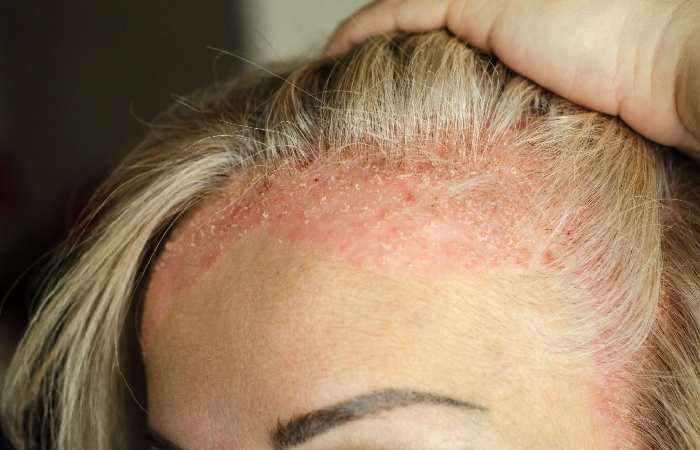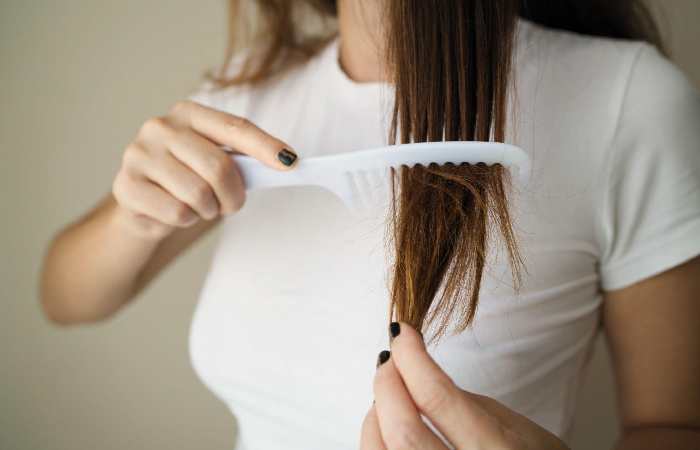What Is Scalp Treatment?
Scalp treatment nature will all depend on your needs. Treatment hair cosmetics can be defined as the group of cosmetic preparations whose use is indicated when there are alterations in the hair. The scalp is compromised of their healthy appearance, the continuity of their existence. Give them an unsightly appearance that negatively affects individual aesthetics.
Hair plays a decisive role in a person’s appearance and the image they want to project themselves. The color, shape, texture, length, or arrangement on the head must be taken into account. And modulated to achieve a specific appearance, according to the prevailing canons of beauty at all times and the personal image that is sought.
Dandruff, seborrhea, hair dryness, or alopecia are common alterations of the Papillion that make it challenging to achieve this aesthetic objective and have hygienic and psychological connotations that, in many cases, significantly affect the person who presents them.
To correct, alleviate, slow down or counteract the effects of these disorders, pharmacies have an arsenal of cosmetic products and dermatological preparations whose combined use can obtain highly satisfactory results. The treatment strategy should be based on taking advantage of the various mechanisms. And the area of application (hair or scalp) of these products to achieve, depending on the nature of the alteration and how advanced it is, the best Outcome.
Capillary Changes of Scalp Treatment
Dandruff ( Pityriasis Capitis )

It is the overexpression of a scaly state of the scalp, accompanied by mild itching, but without clinical signs of inflammation.
Although the causes of dandruff are complex and have not been fully established, it is known that it has its origin in the acceleration of the physiological process of turnover of the basal epidermal cells of the scalp treatment. The result is the excessive formation of horny cell aggregates, those characteristic whitish scaly masses. Which, when caught between the hair or falling on the shoulders, give a person an unfair appearance of dirt and neglect.
The elements that act together in its appearance will later serve as the basis for treatment cosmetics: acceleration of mitosis, parakeratosis, increased sebaceous secretion, and proliferation of fungal flora ( Pittosporum oval ).
Seborrhea
It is an efficient disorder of the sebaceous glands. These generate hypersecretion that ends up oiling the hair and scalp excessively. Over-grease hair has a shiny and catchy appearance, is difficult to style. And accumulates dirt quickly due to its greater capacity to capture environmental pollutants. The accumulated sebum often undergoes oxidative processes that generate a foul odor.

The Pittosporum oval is an opportunistic fungus that degrades by the action of extracellular enzymes, sebaceous triglycerides. In some cases, it closely relates to pityriasis. Consequently, there is an elevation in the level of free fatty acids, which have an irritant capacity. And, in addition, can cause the stimulation of epidermal proliferative processes (hence it also link to dandruff).
It believes that the combination of seborrhea and the irritation cause by Pittosporum is what ends up causing what is known as seborrheic dermatitis (chronic inflammation of the scalp that occurs with intermittent episodes of variable duration, characterized by intense itching, erythema, and peeling).
The Pittosporum oval is an opportunistic fungus that degrades by the action of extracellular enzymes, sebaceous triglycerides.
Hair Dryness

The alteration derive from the insufficient presence of sebum on the capillary surface.
Dry hair looks rough and dull. The scales that form the cuticle open and lift, favoring tangles, and the hair shafts become porous, brittle, and brittle. Two morphological disorders that frequently associate with capillary dryness (are the appearance of thickening in the hair shaft that causes the hair to break at that point) and trichoptilosis (hair that is split at the ends, or “split ends”).
Alopecia
Alopecia divides into two large groups, depending on the degree of involvement of the hair follicles. Thus, we speak of scarring alopecia if damage, malformation, or destruction of the hair follicles. Scarring is irreversible, and the only possible treatment is hair transplantation. At the same time, if there are only functional changes in them that do not definitively affect their viability. It is non-scarring alopecia. Non-scarring includes the most common alopecia, among which are:
- Androgenic or Common Alopecia. It is the most common among Caucasian males. It has its origin in an increase in the production of testosterone (genetically encoded). Which ends up causing a disorder in the hair follicle and, consequently, a delay in the anagen phase.
- Traumatic Alopecia. Hair loss cause by traction, friction, or trichotillomania (excessive manipulation of the hair by the individual).
- Alopecia Aerate. It a type of hair loss characterize by the presence of patriotic plaques in the leather
- Scalp. It occurs at any age and affects both sexes equally. Although different causes point out (autoimmune, endocrine, psychological, etc.), their origin is unknown. Contrary to what it may seem, the follicles do not destroy so that the hair can grow back.
- Telogen Effluvium. For very diverse reasons, most hair goes into the telogen phase and, in a few months, the hair begins to fall out massively. It associate with childbirth, stress, chemotherapy treatments, drastic diet changes, exposure to heavy metals, etc. Even though the fall will be pretty radical and very serious, it easily remits when the causes that cause its appearance are interrupting.
Cosmetics of Scalp Treatment
Regardless of its corrective action, a cosmetic hair treatment must have good extensibility. Enables the arrival of the active ingredient, in sufficient quantity, to all ends of the area to treat.
Regarding the capillary substrate, it must take into account that it is an area in which the penetration capacity is not very high. For this reason, it is frequent that the actives include in liposome vectors or liquid vehicles with aqueous or alcoholic solvents that act as absorption promoters.
Likewise, taking into account the characteristics of this body area, and if the stability of the preparation allows it. A hair cosmetic should incorporate a hygienic, conditioning, nourishing, and sunscreen action. In addition, if a capillary massage must use for its application, any possible effect sought will enhance by the stimulation derived from this action.
The cosmetic form that optimally combines all these specifications is shampoo and, precisely for this reason. It is one of the accepted presentations for hair treatment products.
Masks, serums, balms, and lotions are other widely use options (usually applied concomitantly, before or after shampoo). Although these formulations do not have hygienic properties, the longer residence time of the product on the surface to treat favors greater efficiency and a more intense effect.
The formulation of these cosmetics includes a series of ingredients whose term pharmaceutical action is based on correcting any of the elements described.
They stand out from them:
- Normalizers of Cellular Activity. Zinc pyrithione, selenium sulfide, etc.
- They act by normalizing the turnover of epidermal cells, which makes them regain proper keratinization.
- Many of them also have fungicidal activity against Pittosporum oval.


